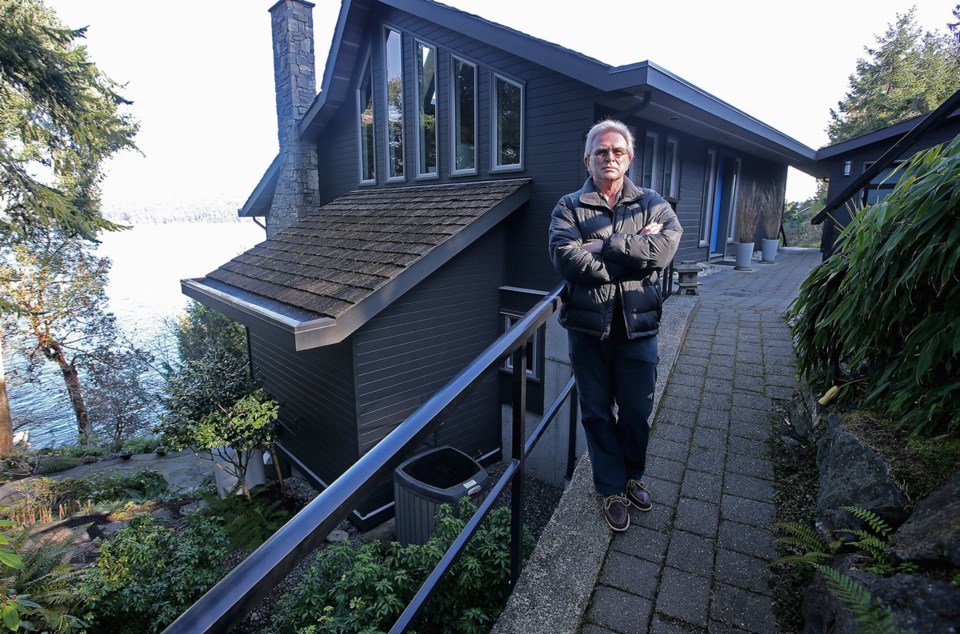The Capital Regional District is facing a backlash over its decision to ease a nine-year-old ban on the land application of biosolids in order to spread the material at the Hartland Landfill.
Willis Point residents, who live near the dump, have started an online petition against the move, fearing that chemicals and pathogens in the dried biosolids will leach into their water supply or that airborne contaminants will pollute the surrounding countryside.
Hugh Stephens, who lives at Willis Point, said local residents were blindsided by the CRD’s “reversal of a long-standing position without even as much as an information session or any evaluation of the health and safety risks.”
He said the decision is particularly concerning given that local residents all get their drinking water from wells. “It flies in the face of every position the CRD has taken,” he said.
Nikki Macdonald, a Willis Point resident and former federal Liberal candidate, said the decision “came out of nowhere,” leaving her and other residents mystified. “Why is this being rushed through now?” she said. “I don’t understand what’s changed from the concerns that led to the initial ban?”
The district prohibited spreading biosolids on land in 2011 over concerns about contaminating farmland and food production with chemicals, heavy metals and pharmaceuticals.
But with the region’s new $775-million sewage-treatment system slated to come on this year, the district is under pressure to figure out what to do with 7,000 tonnes of dried biosolids that will be generated annually.
The plan at this point is to ship most of that granular material to the Lower Mainland for use as fuel in cement kilns. But the district needs to find a use for about 700 tonnes — the equivalent of 70 truckloads — that will be produced during the four to six weeks each year when the kilns shut down.
Initially, the plan was to simply dump that material in the landfill, but B.C. Environment Minister George Heyman has ordered the district to find a beneficial use for it.
District staff insisted that easing the ban and spreading the material at Hartland is the only short-term option available; otherwise, the district risks losing money earmarked for the sewage-treatment project.
Faced with that prospect, a majority of directors approved spreading the biosolids on active and inactive sections of the landfill as a temporary solution until a better use for the materials is found.
Saanich Coun. Colin Plant, who chairs the CRD board, said Wednesday that the district is operating under “very tight timelines” to submit a plan to the province by the end of April.
He said that he and a majority of directors are confident that spreading the material at the dump for a short period of time poses no health hazard.
“We will be going out to talk to the community,” he said. “But if I felt in my heart that there was danger to the water and to the welfare of the people of Willis Point, I would not have voted for this.”
Plant added that the board has a “high level of confidence” in the level of treatment that the biosolids will undergo to render any contaminants inert, “such that when we are finished, we will have a product that actually exceeds provincial requirements.”
It was not a unanimous decision, however. Some directors, including Mike Hicks, regional director for the Juan de Fuca Electoral Area, which includes Willis Point, argued that the district should ask Heyman for more time to come up with a better solution.
Hicks has since written to Heyman requesting that he extend the deadline for the CRD to find a beneficial use for the biosolids.
“The CRD’s plan has significant potential to contaminate the local drinking water, residential land, farm land and the natural ecosystem surrounding the Hartland area,” Hicks writes.
“While the Ministry of Environment does not consider burying the biosolids a beneficial use, distributing the dried product on the surface could result in [airborne] contamination kilometres from the site.”
Hicks says the district won’t have to deal with the 700 tonnes of biosolids until the kilns shut down in 2021, leaving plenty of time to consult with residents and figure out a way to simply store the material, rather than spreading it on the land.
Heyman was unavailable for an interview Wednesday, but his ministry issued a statement, noting that the CRD had more than three years to develop a biosolids plan. “The ministry looks forward to receiving and reviewing that plan, which is due at the end of April. No extensions are anticipated.”
The ministry statement acknowledged people’s concerns about biosolids, but says their use is strictly controlled to protect human health and the environment.
The Organic Matter Recycling Regulation requires that “biosolids are treated and stabilized to reduce odours and harmful substances,” the statement said. “Biosolids are then sampled by the wastewater treatment plant to ensure they meet the strict standards that are protective of human health and the environment.”
The statement added that biosolids can be used to support forest regrowth or reclaim mining sites.
“The ministry is pleased to see the CRD moving in the direction of beneficially utilizing this resource. Biosolids use at the landfill will support vegetation re-growth and reduce greenhouse-gas emissions.”



